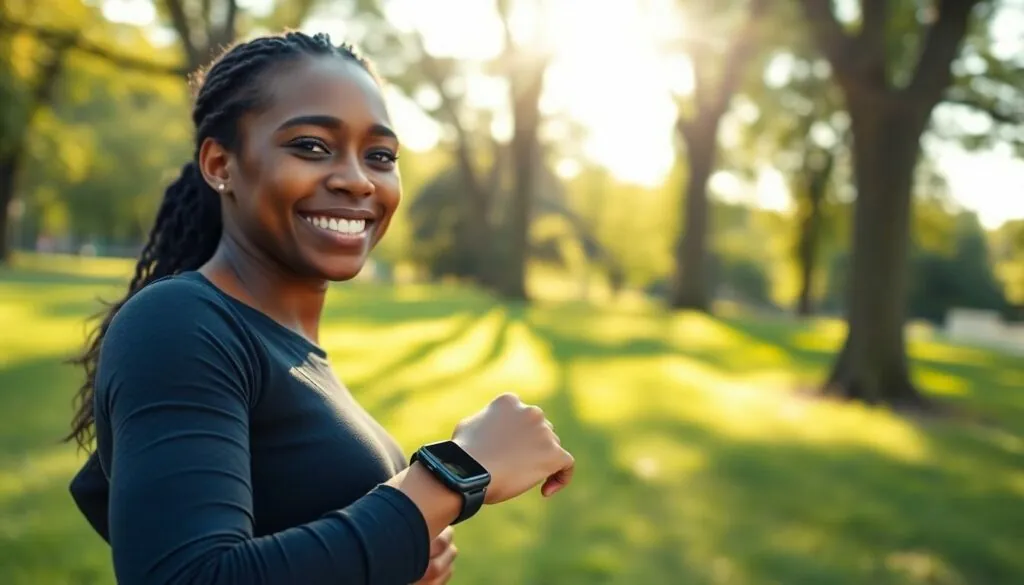Table of Contents
ToggleIn a world where your wrist can track your heart rate, count your steps, and even remind you to breathe, IoT wearables have become the ultimate sidekick. These nifty gadgets are more than just fashionable accessories; they’re transforming how people interact with technology and their health. Imagine strutting into a meeting while discreetly monitoring your stress levels—talk about multitasking!
Overview Of IoT Wearables
IoT wearables integrate technology seamlessly into daily life, offering features that facilitate both personal and professional tasks. These devices range from smartwatches and fitness trackers to health monitors, each providing unique capabilities. Smartwatches, for instance, allow users to receive notifications and respond to messages without pulling out a phone. Fitness trackers monitor physical activity, track sleep patterns, and provide insights into overall health.
Health monitors focus on specific wellness metrics. Devices can measure heart rates, track stress levels, and monitor blood pressure, ensuring users stay informed about their health status. Many of these wearables are equipped with sensors that collect real-time data and sync with smartphones for easy access.
User engagement plays a critical role in the adoption of IoT wearables. Gamification encourages users to meet fitness goals, making exercise more enjoyable. Designs often feature customizable options, allowing individuals to express their style while enjoying functionality.
Connectivity is vital in IoT wearables. These devices use Bluetooth and Wi-Fi to communicate with smartphones or other smart devices, enhancing their usability. Many applications provide analytical insights for users to track progress over time.
Privacy and security remain paramount concerns. Manufacturers are incorporating advanced encryption methods to safeguard user data. Compliance with regulations helps ensure that personal information is protected as users navigate their health and wellness goals.
The market for IoT wearables continues to expand, driven by advancements in technology and user demand. As features evolve, these devices are becoming indispensable tools in health management and technology interaction. Users enjoy the dual benefits of fashion and practicality, ensuring IoT wearables remain relevant in today’s digital landscape.
Types Of IoT Wearables


Different types of IoT wearables cater to various user needs, enhancing daily life through connectivity and functionality. The most notable categories include smartwatches, fitness trackers, and health monitors.
Smartwatches
Smartwatches blend traditional timekeeping with advanced technology. Users can receive notifications, track activities, and answer calls right from their wrists. Many models incorporate customizable designs, making them appealing for personal expression. Features often include heart rate monitoring, GPS, and access to apps, enhancing productivity on the go. These devices connect seamlessly to smartphones, augmenting their usability.
Fitness Trackers
Fitness trackers focus primarily on monitoring physical activity and health metrics. They track steps taken, calories burned, and sleep patterns, encouraging healthier lifestyles. Users often appreciate the motivational aspects, such as daily goals and progress tracking. Some models include advanced features like heart rate monitoring and GPS functionality. Lightweight designs and user-friendly interfaces make these devices accessible for all fitness levels.
Health Monitors
Health monitors provide specialized tracking for various wellness metrics. Users benefit from features like blood pressure and glucose level tracking, promoting proactive health management. Many devices feature alerts for irregular readings, ensuring timely medical responses. Integration with smartphone apps facilitates easy data monitoring and sharing with healthcare providers. These wearables support individuals in managing chronic conditions through continuous health insights.
Benefits Of IoT Wearables
IoT wearables offer numerous advantages that enhance everyday life. These devices significantly improve user experience through convenience and connectivity.
Convenience And Connectivity
Users enjoy real-time updates from notifications on their wrists. Smart technology integrates into daily routines effortlessly, allowing for easy access to important information without needing to check phones. Bluetooth and Wi-Fi connectivity ensure seamless communication with other devices, enhancing overall functionality. Dependable connectivity facilitates effortless syncing of data, maintaining a continuous connection between wearables and mobile applications. Quick responses during calls or messages streamline interactions, making it simpler to manage both personal and professional commitments.
Health And Fitness Tracking
IoT wearables actively monitor various health metrics, promoting wellness. Fitness trackers enable users to set goals and keep track of their physical activity efficiently, contributing to healthier lifestyles. Heart rate monitoring and sleep tracking provide insights into overall health, helping individuals make informed decisions. Smartwatches combine fitness features with everyday functionalities, making them an ideal choice for those looking to manage health and stay connected simultaneously. Personalized health data empowers users to take charge of their fitness journeys while providing insights for healthcare professionals.
Data Collection And Analysis
Collecting significant amounts of health data is another key benefit of IoT wearables. These devices gather information on physical activity, sleep patterns, and vital signs automatically, streamlining data management for users. Comprehensive analysis of collected data offers valuable insights, guiding lifestyle changes and improving well-being. Wearables facilitate easy sharing of health metrics with healthcare providers, fostering proactive health management. Advanced analytics tools help users understand their habits, encouraging informed choices for better health outcomes.
Challenges And Concerns
Various challenges arise with IoT wearables, impacting user experience and safety.
Privacy And Security Issues
Privacy ranks as a primary concern for users of IoT wearables. Data breaches expose sensitive personal information, prompting users to worry about unauthorized access. Device manufacturers must implement robust encryption methods to protect user data. Compliance with data protection regulations like GDPR adds another layer of accountability. Users must remain vigilant, frequently updating their devices to mitigate vulnerabilities. As security measures advance, it’s essential for manufacturers to educate consumers about best practices.
Battery Life And Performance
Battery life significantly affects the overall usability of IoT wearables. Many devices struggle to maintain prolonged performance without frequent recharging, limiting their convenience. Users expect wearables to last through full days of activity without interruption. Improving energy efficiency in device design becomes crucial as features expand. Performance can suffer when battery life dwindles, leading to slower response times and reduced functionality. Technological advancements should focus on optimizing both battery life and device capabilities for a seamless user experience.
Future Trends In IoT Wearables
Emerging trends in IoT wearables demonstrate significant advancements in technology. Increased integration of artificial intelligence enables wearables to offer personalized recommendations based on user behavior and preferences. Enhanced machine learning algorithms support more accurate health monitoring, leading to better performance of fitness trackers and health monitors.
Collaboration with healthcare providers fosters improved patient care. Wearables that continuously track vital signs can alert medical professionals, offering real-time data that enhances decision-making. These devices play a vital role in telemedicine, allowing remote patient monitoring and reducing the need for in-person visits.
Sustainability in materials and manufacturing processes represents another critical trend. Companies are prioritizing eco-friendly materials, which not only appeal to environmentally-conscious consumers but also align with global sustainability initiatives. Long-lasting battery designs are under development, aiming to reduce electronic waste and enhance user convenience.
Interoperability among devices continues to evolve. The ability for wearables to connect with various smart home devices creates a more cohesive user experience, allowing for streamlined interactions and lifestyle automation. Smart home integrations facilitate seamless communication between wearables and other technologies, enriching daily life management.
Increased focus on data privacy and security remains paramount. Regulations that safeguard user data promote trust among consumers, fostering broader adoption of IoT wearables. Innovations in encryption methods accompany new devices to ensure secure transmission of sensitive health information.
Real-time health insights through wearables contribute to preventive healthcare adoption. Users accessing actionable data will likely experience improved health outcomes, driving demand for advanced health monitor functionalities. Organizations prioritizing user-centric designs tap into the evolving market, ensuring relevance in the fast-paced technology landscape.
IoT wearables are revolutionizing the way individuals manage their health and interact with technology. With their ability to provide real-time insights and facilitate seamless connectivity, these devices empower users to take charge of their wellness while enhancing daily productivity. As advancements in AI and machine learning continue to shape the future of wearables, the potential for personalized health monitoring and improved user experience grows significantly.
Addressing challenges like privacy and battery life will be crucial for widespread adoption. As manufacturers innovate and prioritize sustainability, IoT wearables will likely become even more integral to both personal and professional lives. The ongoing evolution of these devices promises to keep them at the forefront of health technology, ensuring that users stay connected and informed in an increasingly digital world.




